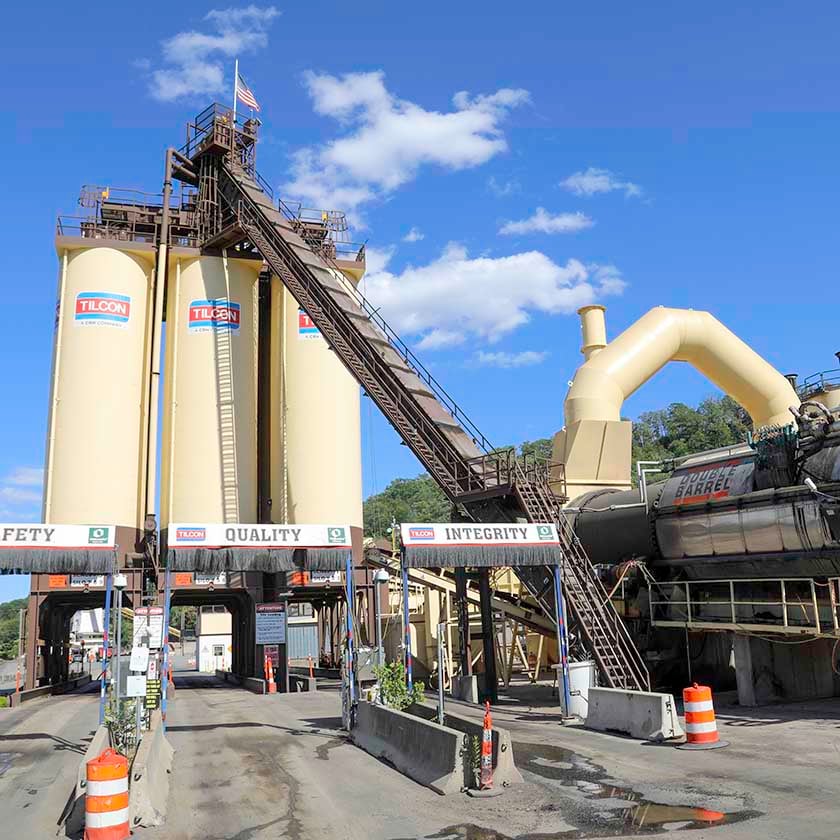Boost Building Worth and Functionality with Hot Mix Asphalt Paving Providers
Boost Building Worth and Functionality with Hot Mix Asphalt Paving Providers
Blog Article
Opening the Keys of Hot Mix Asphalt Innovation
Discovering the depths of hot mix asphalt modern technology reveals a world where precise formulations and thorough processes converge to shape our roads and facilities. The blend of binders, fillers, and aggregates isn't simply a building job but a tactical orchestration of longevity and effectiveness.
Significance of Warm Mix Asphalt
Warm Mix Asphalt plays a crucial duty in modern infrastructure advancement due to its durability and cost-effectiveness. As the most commonly used leading material for roads, freeways, and vehicle parking great deals, Warm Mix Asphalt supplies a range of advantages that contribute to its significance in building and construction projects.
The durability of Hot Mix Asphalt originates from its composition, that includes aggregates, binder, and filler materials that are very carefully chosen and blended to meet particular efficiency requirements. This precise mix results in a versatile and strong pavement that can endure constant use without substantial wear and tear. Warm Mix Asphalt is 100% recyclable, further improving its sustainability and environmental benefits. Overall, the significance of Hot Mix Asphalt in framework development can not be underrated, as it continues to be a keystone of contemporary building methods.
Components of Asphalt Mixes
The make-up of asphalt mixes consists of meticulously chosen aggregates, binder, and filler materials that are crucial for attaining specific efficiency demands. Accumulations are the main part of asphalt mixes, offering stamina and security. The binder, normally asphalt or asphalt cement, holds the aggregates with each other and provides versatility and sturdiness to the mix.
The combination and proportion of these elements play a substantial function in determining the quality and efficiency of the asphalt mix. Engineers meticulously create the mix to satisfy details requirements, considering factors like web traffic quantity, climate problems, and sidewalk lifespan. Correct option and harmonizing of accumulations, binder, and fillers are essential for developing sturdy, long-lasting asphalt pavements.
Mixing and Production Methods

When the aggregates are picked, the binder, typically asphalt cement, is included in bind the products together. The binder's quality and amount significantly impact the mix's stamina, flexibility, and resistance to environmental variables. Additionally, fillers like hydrated lime or Rose city concrete may be integrated to improve particular qualities of the asphalt mix, such as its workability or moisture resistance.
During manufacturing, the accumulations and binder are heated, typically in between 250-325 ° F(121-163 ° C ), to facilitate blending and make sure proper finish of the accumulations. The blending process should be extensive to achieve an uniform mixture that advertises the desired performance attributes of the asphalt. Numerous strategies, such as set mixing or drum blending, are employed to attain consistent and high-grade asphalt mixes for construction jobs.
Aspects Impacting Asphalt Efficiency
Aspects affecting asphalt efficiency encompass a variety of variables that influence the resilience, durability, and general high quality of asphalt pavements. One key element is the high quality of materials utilized in the asphalt mix.

Style considerations, such as sidewalk thickness and drainage, are important in making sure the long-lasting efficiency of the asphalt pavement. By thoroughly taking into consideration these professionals, variables and designers can maximize asphalt efficiency and boost the service life of pavements.
Lasting Practices in Asphalt Technology

WMA allows for the manufacturing and placement of asphalt blends at lower temperature levels compared to traditional hot-mix asphalt, resulting in minimized energy intake and greenhouse gas emissions. The use of porous asphalt mixes can aid minimize stormwater drainage concerns by permitting water to penetrate via the sidewalk and into the ground, advertising natural water purification and charge procedures.
Final Thought
To conclude, hot mix asphalt innovation plays an essential role in modern infrastructure development as a result of its sturdiness and cost-effectiveness. By thoroughly stabilizing components, using appropriate mixing techniques, and considering numerous elements, engineers can develop high-quality asphalt blends that endure heavy traffic loads and extreme weather. Welcoming lasting practices, such as utilizing warm-mix modern technologies and recycled products, additionally boosts the ecological friendliness of asphalt innovation.
Blending and production methods in warm mix asphalt modern technology involve the specific combination and processing of published here aggregates, binder, and fillers to produce a resilient and high-performance asphalt mix.Variables affecting asphalt efficiency incorporate an array of variables that impact the toughness, longevity, and general quality of asphalt sidewalks. Sustainable practices in asphalt technology encompass various campaigns aimed at minimizing the environmental impact of asphalt production and paving procedures. By incorporating redeemed asphalt pavement (RAP) and recycled asphalt shingles (RAS) right into new asphalt mixes, the industry can substantially lower the consumption of raw products and energy, while additionally lowering land fill waste.
WMA enables for the production and placement of asphalt blends at lower temperatures contrasted to standard hot-mix asphalt, resulting in reduced energy consumption and greenhouse gas emissions.
Report this page